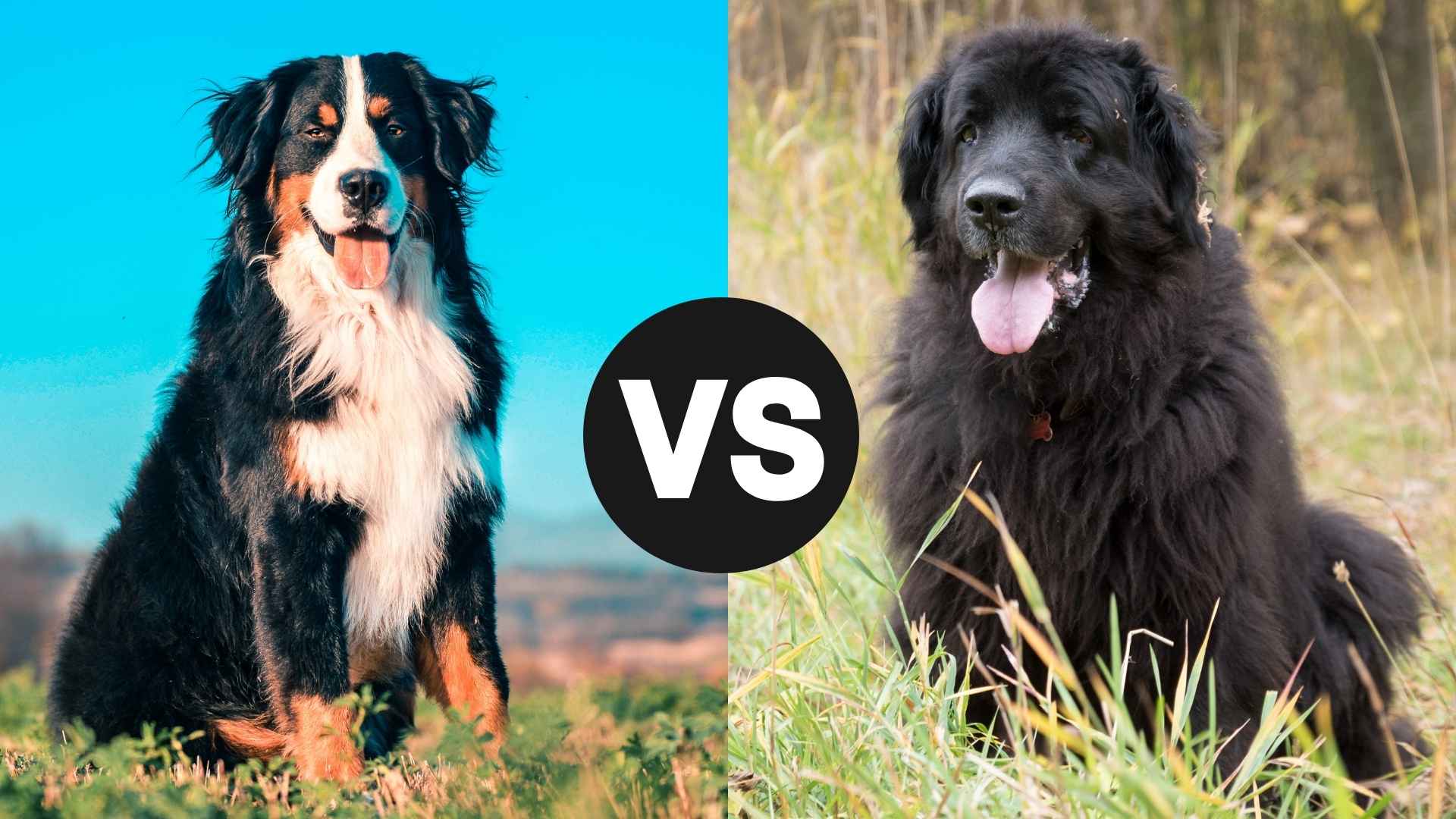If you’ve ever dreamed of sharing your life with a giant, cuddly fluffball, chances are you’ve found yourself torn between two iconic breeds: the Bernese Mountain Dog and the Newfoundland. These majestic dogs are like living teddy bears, equal parts striking and snuggly—but they’re not identical twins.
Both breeds bring big energy (and even bigger hearts) to the table. They’re loyal, loving, and total showstoppers in any park or pet-friendly café. But behind all that floof are unique personalities, health needs, and lifestyle considerations that can make one breed a better fit than the other, depending on your vibe.
Whether you’re a seasoned dog owner ready for a next-level companion or a first-timer researching the best gentle giants, this guide dives into the details you actually care about: size, temperament, grooming, health, and how long your furry soulmate will stick around.
This isn’t just a fluff piece (pun absolutely intended). We’re breaking down the real pros, cons, and quirks of each breed so you can confidently choose the right fit for your lifestyle and lap (yes, they will try to be lap dogs).
Let’s get into the ultimate showdown of Bernese Mountain Dog vs Newfoundland—because when it comes to big dogs with even bigger hearts, every detail counts.
|
Trait |
Bernese Mountain Dog |
Newfoundland |
|---|---|---|
|
Origin |
Switzerland (traditional farm dog) |
Canada (water rescue & fisherman’s helper) |
|
Size |
70–115 lbs; 23–27.5 in tall |
100–150+ lbs; 26–28 in tall |
|
Coat Type |
Tricolor, medium-long, straight or slightly wavy |
Black, brown, gray, or Landseer; thick & slightly oily |
|
Coat Maintenance |
Moderate grooming; seasonal shedding |
High grooming needs; mats easily; frequent shedding |
|
Temperament |
Loyal, affectionate, a bit clingy, more alert |
Calm, nurturing, laid-back, famously gentle |
|
Exercise Needs |
Moderate to high; enjoys structured activities |
Low to moderate; prefers swimming and relaxed walks |
|
Trainability |
Intelligent, responsive, loves praise |
Patient, steady learner, very emotionally in tune |
|
Dog Sports Suitability |
Great for obedience, drafting, agility |
Great for water sports, rescue trials, and carting |
|
Drooling |
Minimal |
Heavy drooler (have that towel ready!) |
|
Health Concerns |
High cancer risk, hip/elbow dysplasia, bloat |
Heart disease, hip dysplasia, cystinuria, bloat |
|
Lifespan |
6–8 years (some reach 10) |
8–10 years (some reach 12 with great care) |
|
Best Fit For |
Active owners who love hiking, structure, and play |
Families or individuals who want a chill, water-loving dog |
|
Living Environment |
Large yard ideal; not for apartment living |
Spacious home needed; excels in cooler climates |
Bernese Mountain Dog vs. Newfoundland
Think of this as a face-off between Swiss charm and Canadian cool. Both large breeds were built for work, bred for loyalty, and blessed with coats so soft that you’ll love your long cuddle sessions.
The Bernese Mountain Dog (or Berner, if you’re in the know) hails from Switzerland, originally bred as a traditional farm dog capable of pulling carts and driving cattle. WebMD mentions they are known for their tricolor coats, affectionate personalities, and gentle energy.

Newfoundlands, on the other hand, are water-loving powerhouses from Canada, bred to help fishermen haul nets and even rescue people from drowning. These water dogs are massive, mellow, and often called “nanny dogs” because of how amazing they are with children.
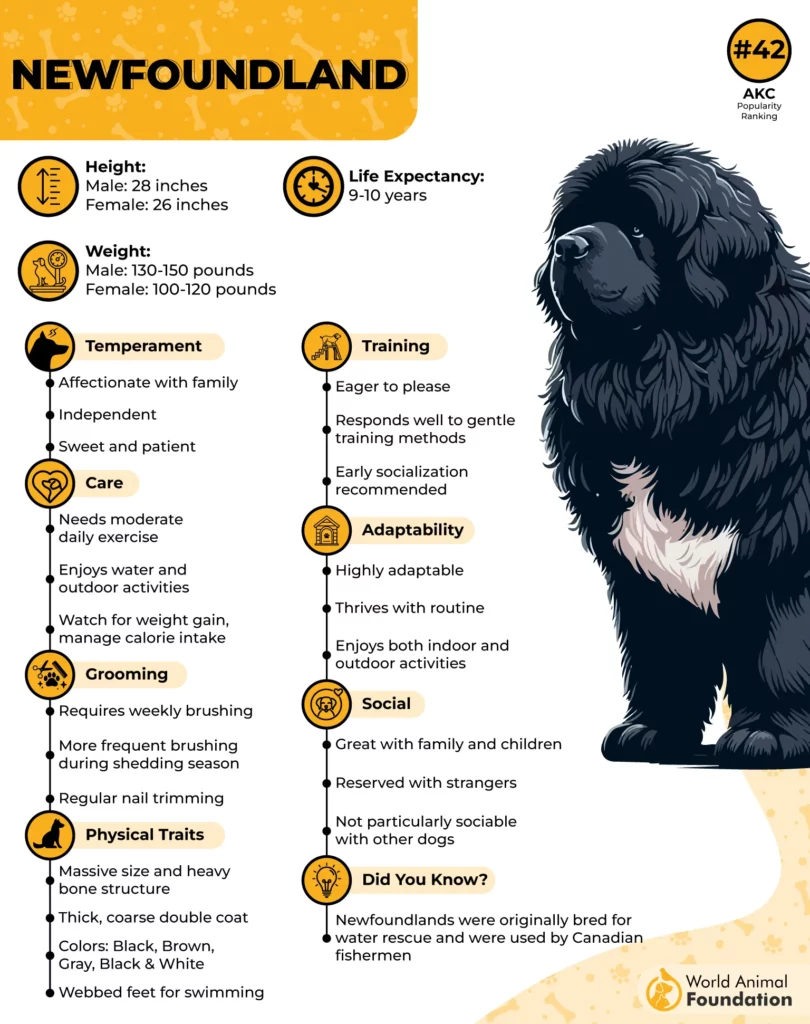
At first glance, these two dogs might seem similar: both are gentle, loyal, and good-natured giants with thick coats and devoted hearts. But they differ in key areas like activity level, grooming needs, trainability, and overall vibe.
In short, the Bernese is your outdoorsy BFF with a sensitive side, while the Newfoundland is your laid-back guardian angel who’s down for a lazy Sunday snuggle… and maybe a swim.
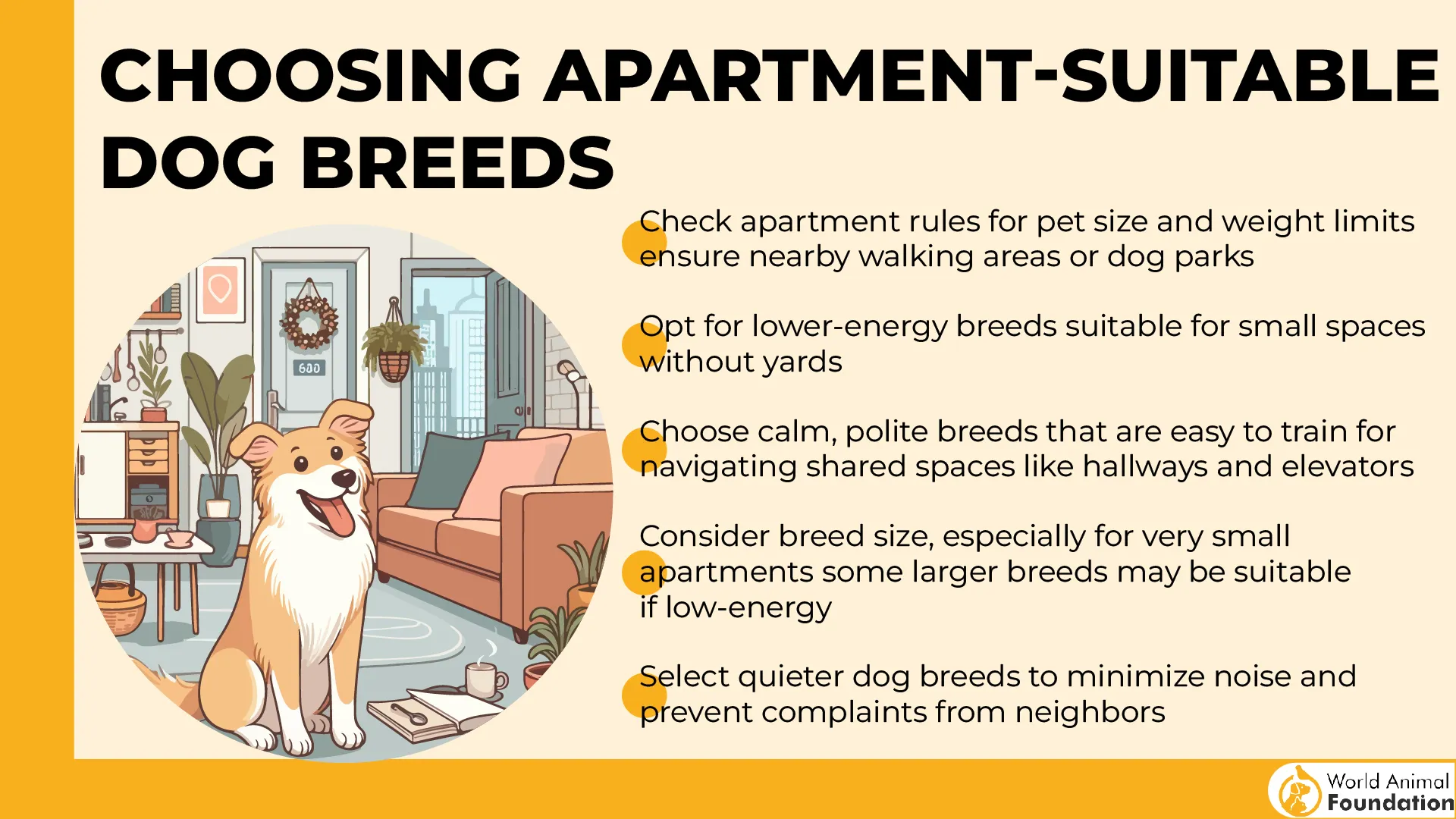
Up next: let’s talk size—because these large dog breeds are not apartment-friendly unless your apartment is a castle.
Bernese Mountain Dog vs. Newfoundland: Size
Spoiler alert: both dogs are big, but the Newfoundland takes the heavyweight title—literally. While both breeds look massive and fluffy, there’s a clear winner when it comes to size and strength.
As per Britannica, the Bernese Mountain Dog usually clocks in at 70 to 115 pounds, standing about 23 to 27.5 inches tall at the shoulder. They’re solid, sturdy, and muscular—but with a graceful, almost elegant look.
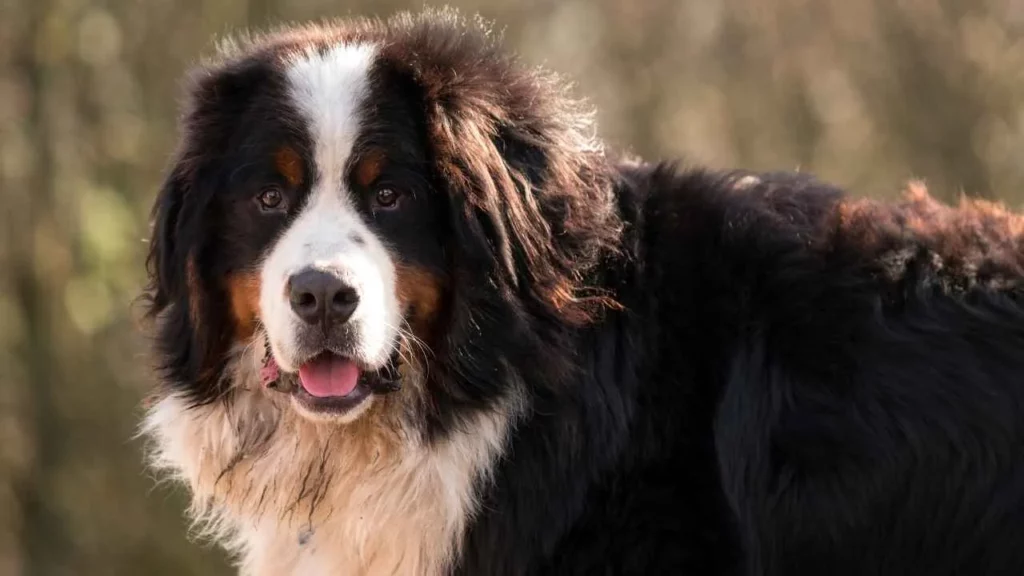
Now enter the Newfoundland breed, often weighing 100 to 150 pounds (yep, some even hit 180!) and standing 26 to 28 inches tall. These dogs are straight-up living throw blankets with legs, and when they sit, they tower like furry statues of kindness.
Newfies are stockier and bulkier, with dense bone structure and sheer mass. These purebred dogs are built for power and endurance, especially in water. Berners, while large, have a more athletic and mobile frame—think mountain agility vs ocean strength.
So, if size is a dealbreaker (especially for lifting into cars or navigating staircases), the Berner is slightly more manageable. But if you’re ready to commit to a true gentle giant with a calm and patient nature, the Newfoundland is your snuggly titan.
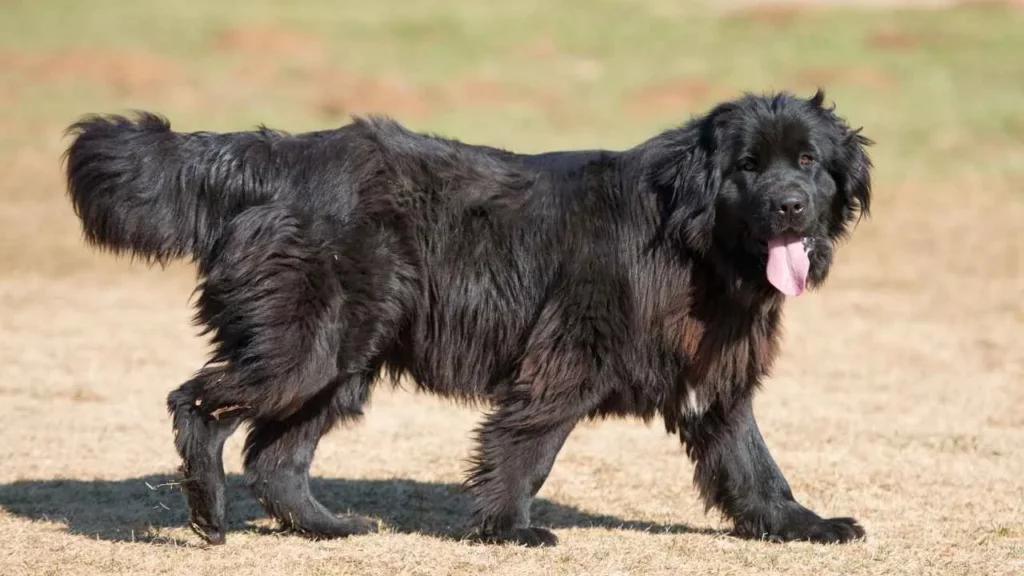
Bernese Mountain Dog vs. Newfoundland: Personality
Choosing between these two breeds often comes down to vibe check, and they pass, but in different ways. Both are sweet, affectionate, and deeply loyal. But their personalities cater to slightly different lifestyles.
AKC mentions that the Bernese Mountain Dogs are outgoing, sensitive, and loyal to the bone. They adore their people and tend to form strong, sometimes clingy bonds. Berners are a bit more active, love outdoor adventures, and can be shy or aloof with strangers until they warm up.
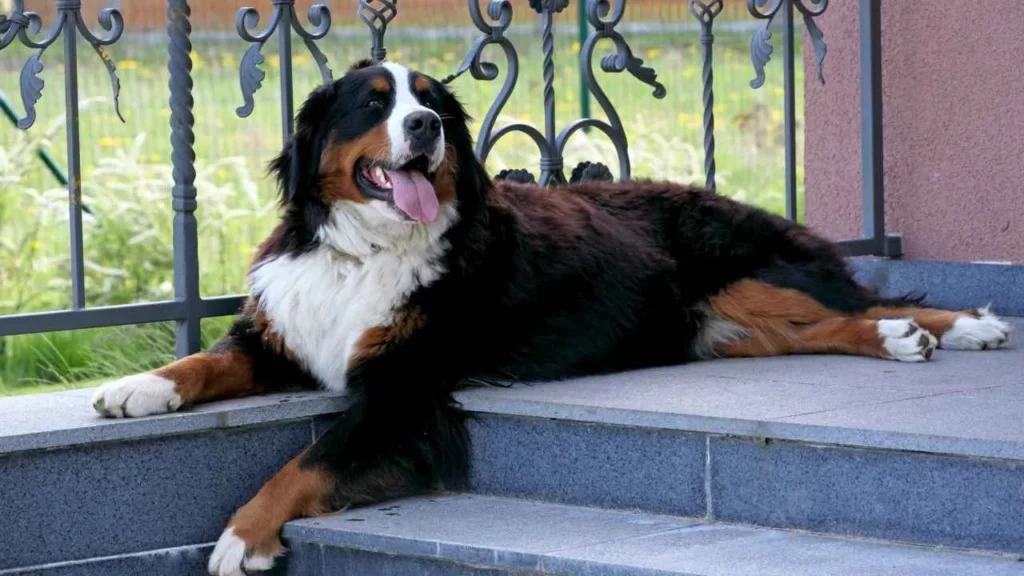
Newfoundlands are calm, steady, and totally chill kings/queens. They’re gentle giants in every sense—patient, nurturing, and famously good with kids. They’re not hyper but love being around their humans, and they’ll often place themselves between you and any perceived threat… just in case.
Berners tend to be more alert and vocal (aka they’ll bark at the Amazon driver). Newfies? Not so much. They’re less reactive and more go-with-the-flow. Think of the Berner as your mountain buddy and the Newfie as your zen lifeguard.
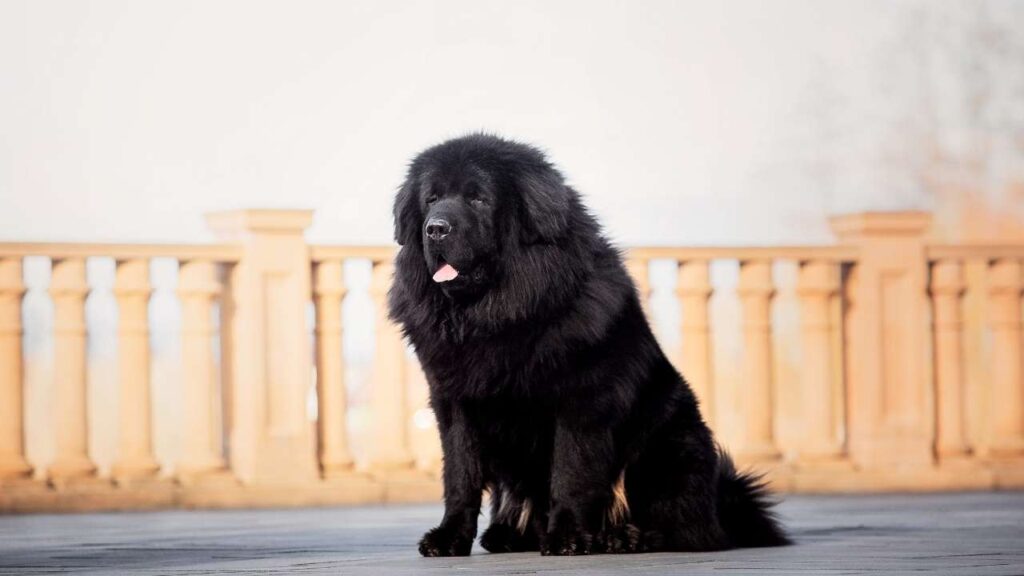
Berners are surprisingly agile for their size and thrive in structured physical activity, especially dog sports that tap into their farm dog roots and strong work ethic.
If you want a large dog with playful energy and outdoor enthusiasm, go to Berner. If your dream pup is a mellow, water-loving companion who doubles as a walking weighted blanket, go Newfie.
Bernese Mountain Dog vs. Newfoundland: Coat Colors
Ah, the fluff factor. These breeds both boast thick, double coats, but they come in different styles, like choosing between cashmere and faux fur.
Bernese Mountain Dogs are famous for their striking tricolor coats—a sleek combo of black, white, and rust that makes them look like they’re wearing formal wear at all times. Their coats are straight or slightly wavy and medium to long in length.
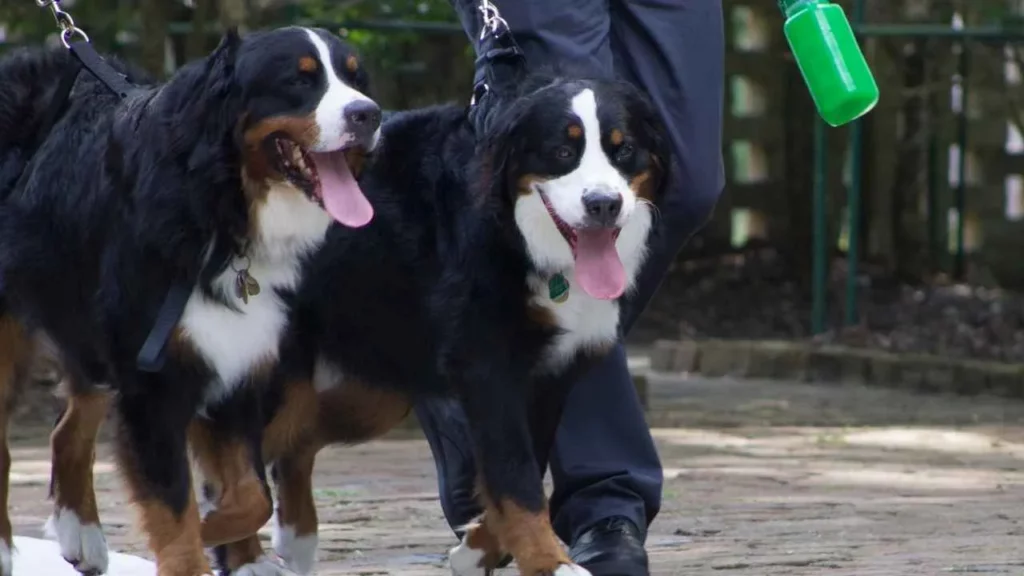
Newfoundlands, on the other hand, come in solid colors or two-tone combos. Think classic black, brown, gray, or the show-stopping Landseer (white with black patches). AKC notes that their fur is slightly oily—perfect for water rescue—but also more prone to shedding like whoa.

Grooming-wise, both require regular brushing, especially during seasonal sheds. But the Newfie’s coat tends to mat more easily and needs extra care to prevent tangles, especially around the ears and hindquarters.
So if coat color and maintenance are key to your decision, Berners offer iconic patterning and a slightly lower-maintenance grooming schedule, while Newfies bring versatile colors with a little extra haircare commitment.
Bernese Mountain Dog vs. Newfoundland: Health Considerations
Now for the not-so-fun but super important stuff: health. Both breeds are beautiful—but they come with some baggage in the health department, especially due to their size and genetics.
Bernese Mountain Dogs are sadly known for a shorter average lifespan (more on that next) due to higher rates of cancer, especially histiocytic sarcoma. They’re also prone to hip and elbow dysplasia, bloat, and progressive retinal atrophy.

Hills Pet comments that Newfoundland dogs tend to have slightly fewer cancer cases but are at risk for heart issues (like subvalvular aortic stenosis), hip dysplasia, cystinuria (a kidney issue), and bloat.
Oh, and they drool.
Like, a lot.
Both need regular vet checkups, joint-friendly diets, and careful monitoring for breed-specific conditions. And because they’re big, early training and weight management are key for long-term health.
These breeds are heavyweights—literally—and all that size puts extra pressure on their hips, elbows, and knees. You need to start early with joint supplements like glucosamine, chondroitin, and MSM. Use non-slip flooring at home to prevent injury, especially for puppies and seniors. Opt for low-impact exercise like swimming or controlled walks instead of jumping or long runs.
Nutrition is everything, especially for dogs prone to weight gain, cancer, or heart issues. Choose large or giant breed formulas to match their metabolism and growth needs. Keep meals consistent and portion-controlled to prevent obesity. Add superfoods like pumpkin (digestive health) or fish oil (anti-inflammatory & coat health) with vet approval.
Bottom line: you’ll want to work with a responsible breeder or adopt from a reputable rescue to ensure good genetics and get a full rundown of potential risks.
Bernese Mountain Dog vs. Newfoundland: Expected Lifespan
Here’s where things get real. If you’re choosing a dog with your heart already half in, lifespan can make a big emotional difference—and sadly, Bernese Mountain Dogs are on the shorter end of the spectrum.
Bernese mountain dogs tend to live for 6 to 8 years, with some making it to 9 or 10. Their shorter lifespan is largely due to the breed’s cancer predisposition and size-related health challenges.
Newfoundlands, while still considered a giant breed (which usually means shorter lifespans), tend to live 8 to 10 years. Purina suggests with great care, some even reach 11 or 12—pretty impressive for a dog their size.

Both dogs will give you a decade of devotion, cuddles, and companionship, but Newfies statistically edge ahead if longevity is a top priority. As both these breeds benefit from a nutrient-rich, joint-supportive diet that’s designed for large or giant breeds. Look for formulas that include glucosamine, chondroitin, and omega-3s to support joint health.
Avoid overfeeding—obesity is a silent life-shortener, especially for breeds already prone to joint issues. Consider adding fresh food toppers like blueberries (antioxidants!) or bone broth (gut health & hydration) with vet approval.
Exercise is critical, but with giant dog breeds, balance is key. Gentle daily walks, light hiking, swimming (especially great for Newfies!), and interactive play all help keep them fit without overstraining joints. Avoid repetitive high-impact activities like jumping, especially during puppy growth stages and senior years.
Still, lifespan isn’t everything—it’s the quality of those years that matters. And both breeds are experts in making every single moment unforgettable.
Conclusion
When it comes to Bernese Mountain Dog vs Newfoundland, there’s no wrong answer—just different types of right. Both are giant-hearted, people-loving dogs that turn heads and melt hearts. It’s all about what kind of companion fits your lifestyle.
Choose the Bernese compared to other pets if you’re outdoorsy, love structured activity, and want a playful, expressive dog with a little extra energy and iconic tricolor style. Choose the Newfoundland if you’re drawn to calm, nurturing energy and don’t mind a little drool with your snuggles.
Either way, you’re signing up for a gentle giant who will become part of your soul. Just be ready for fur on everything, full-body hugs, and a life full of love that outweighs their size.
Need help comparing care routines or creating a printable side-by-side chart for decision-making? I’ve got you!


